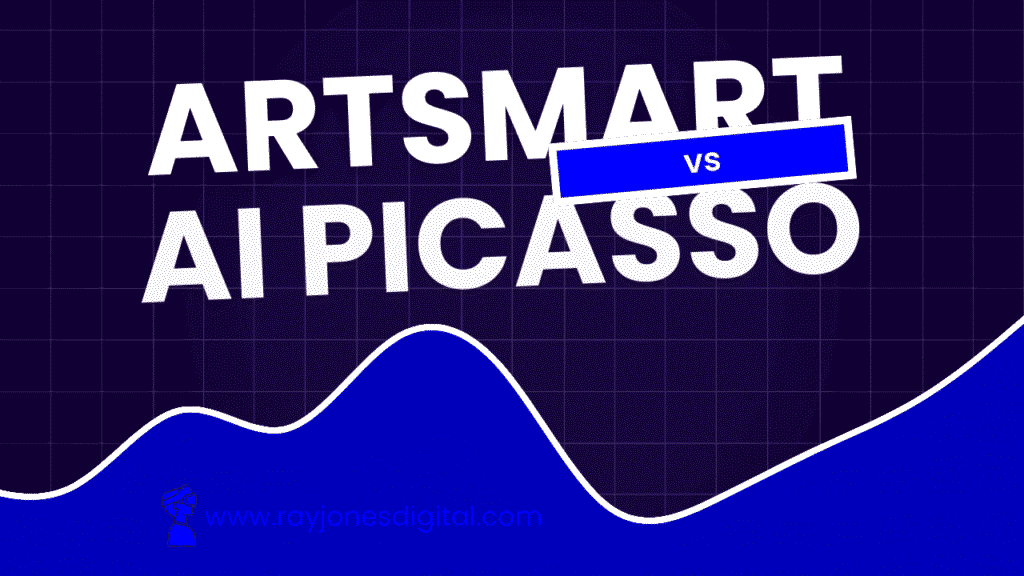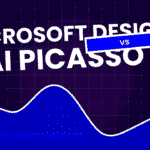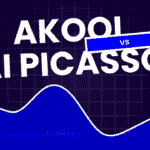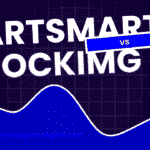
Imagine being able to create a masterpiece without ever having picked up a paintbrush. That’s the fascinating world of AI art generators like ArtSmart and AI Picasso. These tools promise to transform how you express creativity, allowing you to generate stunning visuals with just a few clicks. But which one is right for you? Whether you’re a hobbyist looking to dabble in digital art for fun, or a professional seeking powerful tools for your next project, understanding the differences between these two platforms will help you make the best choice. Dive into this ultimate showdown to discover which AI companion can best unleash your inner artist, and enjoy practical insights into features, usability, and value for money.
Understanding ArtSmart and Ai Picasso
Let’s dive into the world of ArtSmart and Ai Picasso, two big names in AI art generation. If you’re new to these tools, don’t worry. I’ll make it easy for you to understand their origins, technology, features, who uses them, and where they stand today.
Origins and Founders
ArtSmart started in 2022 in the United States, while Ai Picasso comes from Japan. ArtSmart focuses on user-friendly interfaces, helping even beginners craft high-quality images. Ai Picasso, meanwhile, aims to inspire creativity by transforming text into vivid images.
Technological Framework
ArtSmart uses advanced algorithms for high-resolution outputs. It leverages a model known as Stable Diffusion to create realistic and unique images. On the other hand, Ai Picasso also adopts Stable Diffusion but adds style transfer to mix famous artists’ motifs into new creations. Both are powerful, but they offer different kinds of user experiences.
Core Features Overview
ArtSmart boasts diverse art styles, batch processing, and high-res outputs, perfect for clean, professional visuals. It’s straightforward to use, even if you’ve never tried AI art before. Ai Picasso gives you sliders and options to tweak each detail, suitable for those who enjoy experimenting. It also supports style transfer, letting you easily channel artists like Van Gogh.
User Base Demographics
ArtSmart attracts businesses and creators needing quick, polished visuals. You might be a blogger, marketer, or a small business owner who cherishes fast results. Ai Picasso appeals to artists and designers aiming for unique, creative outcomes. If you’re looking for funky visual experiments, Ai Picasso can be a great playground.
Current Position in the Market
ArtSmart is noted for its reliability and user-friendly design. It’s popular among professionals who prioritize consistency and detail. Ai Picasso, with its creative flexibility, is appealing to users wanting innovative and artistic variance. The choice between them often comes down to whether you need steady output or a sandbox for creative expression.
Both platforms capture unique parts of the art world, showing how AI can transform creativity. Whether you need stability or something more avant-garde, they each offer significant potential.
Feature Comparison: Creativity and Outputs
When it comes to creativity, ArtSmart and Ai Picasso shine in different ways. Let’s explore their artworks, artistic styles, customizability, output quality, and how they can be used in real life.
Examples of Artwork
ArtSmart excels in producing realistic and clean images. Imagine a vivid sunset or a lifelike portrait—all detailed and refined. Ai Picasso, on the other hand, leans towards the imaginative. It can transform a simple text like “starry night” into a fascinating scene filled with whimsy.
Both platforms showcase galleries where you can see the range of their creations. If you prefer clean, polished visuals, ArtSmart is your go-to. If you love a splash of creativity, Ai Picasso offers delightful surprises.
Artistic Styles and Diversity
ArtSmart offers a wide range of built-in styles from photo-realistic to anime. You can switch between them easily. Ai Picasso is more about style experimentation. It allows you to mix famous artists’ styles into new pieces. Want a mashup of Van Gogh and Frida Kahlo? Ai Picasso can do that.
Customizability and User Control
ArtSmart keeps things simple. You choose a style and let it do the work. It’s perfect if you want less hassle. Ai Picasso gives you more control. You can adjust brush sizes and hues to get the exact look you want.
For those who like tweaking, Ai Picasso is your playground. It’s for users who want to experiment with every detail of their creation.
Quality of Output
ArtSmart focuses on high-resolution images. These are ready for professional applications like marketing or print materials. Users often praise its clarity and detail, according to reviews from [TopAI.Tools](https://topai.tools/compare/aipicasso-vs-artsmart-ai).
Ai Picasso is praised for its unique outputs. However, the creative flair sometimes sacrifices polish. Some reviewers from [G2](https://www.g2.com/compare/ai-picasso-vs-artsmart) note it might need post-processing for commercial use.
Use Cases
ArtSmart is perfect for businesses and content creators needing quick, reliable visuals. Think marketing campaigns, social media posts, or product galleries. Bloggers and agencies also make use of it to improve user engagement.
Ai Picasso suits artists or designers who love pushing the boundaries. It’s great for creative projects like digital art exhibits or personal art collections. If you enjoy showing off unique styles, Ai Picasso could be your best tool.
In choosing between them, consider your needs: professional consistency with ArtSmart or artistic exploration with Ai Picasso. Each has its strengths, making them leaders in the AI art space.
Usability and Accessibility
This section explores how user-friendly and accessible ArtSmart and Ai Picasso are for everyone. Let’s dive into the details, from interface design to device compatibility.
User Interface Design
ArtSmart offers a clean, straightforward layout. You’ll find it easy to navigate, even if it’s your first time. The buttons and options are intuitive, catering to quick learning. Ai Picasso, on the other hand, provides more artistic freedom. It includes sliders and dials to tweak every little detail, which feels thrilling but may overwhelm beginners.
Example: If you’re creating a portrait, ArtSmart simplifies the process with preset styles. Ai Picasso lets you fine-tune everything, from brush strokes to color palettes.
Ease of Use for Novices vs. Experts
ArtSmart shines for beginners. Its drag-and-drop functionality helps you start without tech skills. For experts requiring more control, Ai Picasso is a playground. It offers advanced features for users who want to push creative boundaries.
Tip: If you’re a newbie, start with ArtSmart to learn the basics. As you gain confidence, explore Ai Picasso for more customization.
Accessibility Features
Both platforms are committed to inclusivity. ArtSmart supports screen readers, making it accessible for visually impaired users. Ai Picasso provides adjustable text size and high-contrast themes for easier visibility.
Real-World Scenario: A user with limited vision can use ArtSmart’s voice-assisted features to create art hands-free, while Ai Picasso’s high-contrast mode aids those with color blindness.
Support and Resources
ArtSmart provides a robust help center with video tutorials and a responsive email support team. There’s also an active community forum for user tips and tricks. Ai Picasso offers an extensive FAQ section and regular webinars to help users refine their skills.
Quick Insight: If you’re stuck, ArtSmart’s tutorials cover everything from starting a project to advanced editing. Ai Picasso’s webinars are great for learning new techniques monthly.
Platform Availability
ArtSmart is available on all major devices, including Windows, Mac, iOS, and Android. This flexibility allows you to work on your projects anywhere, anytime. Ai Picasso is also cross-platform but excels particularly in mobile apps, making on-the-go creation smooth.
Example Use Case: With ArtSmart, you can seamlessly switch from your phone to laptop. Ai Picasso’s mobile app is perfect for sketching ideas while commuting.
In summary, ArtSmart is user-friendly, particularly for beginners. Ai Picasso offers deep artistic exploration for experienced users. Both platforms support inclusive design and offer helpful resources to guide you through your creative journey.
AI Ethics and Artistic Authenticity
The world of AI art presents unique ethical challenges. Let’s explore copyright, traditional artist impacts, and the authenticity of AI-generated art. We’ll also look at privacy concerns, bias, and some real controversies.
Copyright Issues: Who Owns the Art?
Who owns AI art? It’s a big question. Typically, the company behind the AI or the user who generates the piece claims ownership. ArtSmart, for example, allows users to have commercial rights, as stated in their terms. Ai Picasso usually limits these rights to personal use unless specified (according to [TopAI.Tools](https://topai.tools/compare/aipicasso-vs-artsmart-ai)). If you plan to sell or widely distribute AI art, checking your platform’s policy is a must.
Impact on Traditional Artists
AI tools challenge traditional artists by democratizing art creation. Artists might worry these tools undervalue their skills, possibly reducing job opportunities. However, others see AI as a fresh tool, much like a new paintbrush. It lets artists explore novel techniques or speed up their workflows.
Authenticity and Value
Is AI art original or just algorithmic output? That’s the debate. Some argue AI lacks the soul that human artists bring. Yet, AI-generated pieces are being auctioned, sometimes fetching high prices. This acceptance shows some collectors value technological originality just as much as traditional creativity.
Ethical Concerns: Data Privacy and Bias
AI-generated art raises concerns beyond just creation. Privacy issues may arise if personal data fuels AI models. Ai Picasso, for instance, uses Secure Sockets Layer (SSL) encryption to protect data (source: [SourceForge](https://sourceforge.net/software/compare/AI-Picasso-vs-ARTSMART-AI/)). Bias in AI algorithms is another worry, potentially reflecting skewed datasets. Users should understand how their data is used and strive for ethical sourcing.
Case Studies: Notable Controversies
An example worth noting is the sale of “Edmond de Belamy,” an AI artwork sold at Christie’s for $432,500. This sale sparked debate about what constitutes genuine art and whether AI pieces should rank equally with human-crafted art. Such controversies indicate a growing interest and acceptance, but also raise ethical and market value questions.
In essence, AI art sits at a crossroads of creativity and technology, presenting both opportunities and challenges. Whether as a tool for enhancing art or as a competitor in the traditional art sphere, understanding these facets helps navigate the ethical landscape effectively.
Cost and Value for Money
Let’s break down what you really get for your money with ArtSmart and Ai Picasso. We’ll explore pricing plans, compare free vs. premium features, and include user insights.
Pricing Models
ArtSmart and Ai Picasso offer different pricing tiers. ArtSmart has a Basic plan at $19/month, a Standard plan at $29/month, and a Business plan at $39/month. Each plan comes with a 30-day money-back guarantee if you haven’t used the AI.
Ai Picasso is a bit different. It offers a Weekly plan for $2.49, reduced from its regular price of $15, and a Quarterly plan at $29.49, which is also discounted. There’s no standard subscription, and you pay only for what you use (according to [SourceForge](https://sourceforge.net/software/compare/AI-Picasso-vs-ARTSMART-AI/)).
Free vs. Premium Features
What can you do for free? With ArtSmart, you get up to 10 images a month without paying a cent. It’s a neat way to test the waters. Meanwhile, Ai Picasso provides 25 credits via its free tier, translating to about 10-15 images.
Now, are premium features worth it? ArtSmart offers high-res, professionally-ready images. If you need lots of content, their Business plan offers unlimited images—a huge perk for heavy users. Ai Picasso, on the other hand, shines with its quirky style transfers and customization options, which are available even in cheaper plans. Great for artsy individuals looking for novelty.
Cost Comparison
Let’s compare these plans directly. ArtSmart’s Basic plan costs $19 monthly, providing 500 images. Ai Picasso’s $15 Starter plan offers 200 credits. If you create tons of images, ArtSmart might be cheaper per image. However, if you focus on quality and creativity rather than quantity, Ai Picasso gives more direct artistic control.
User Testimonials
People have lots to say about these platforms. Users love ArtSmart for its ease and polished results, perfect for branding or commercial projects. They often mention its reliability and quality. Meanwhile, Ai Picasso users chat about its flexibility and the fun of playing with different styles. It’s popular among those not afraid to experiment (as noted by [G2](https://www.g2.com/compare/ai-picasso-vs-artsmart)).
Investment vs. Return
For businesses, ArtSmart can become an infrastructure tool, creating visual content for marketing and eCommerce at a predictable cost. The return on investment for ArtSmart hinges on its quick turnaround and high-quality output—ideal if you’re pumping out content regularly.
Artists might find Ai Picasso a worthwhile bet. It offers unique, customizable outputs that stand out. While it may not create print-ready images immediately, the creative freedom can lead to breakthroughs or new, stand-out pieces. This potential for unique creation might justify its price if originality is your main goal.
In summary, both platforms offer considerable benefits, depending on what matters most to you—volume and polish with ArtSmart, or creative exploration with Ai Picasso. Choose based on what aligns better with your personal or business goals.
Future Developments and Innovations
Looking ahead, both ArtSmart and Ai Picasso are making exciting strides in AI art. Let’s break down what’s coming and how it could shake up the art world.
Upcoming Features
ArtSmart is rolling out a real-time collaboration feature soon. You’ll be able to create art with friends or team members, similar to Google Docs. Ai Picasso is focusing on enhancing its style transfer capabilities, allowing even more artistic freedom. Imagine easily switching between styles of famous artists while creating a masterpiece.
Trends in AI Art
AI art is trending toward more individualized output. Algorithms are now learning to mimic human artists’ unique touches. According to AI experts, systems like ArtSmart and Ai Picasso will soon craft personalized styles, fitting your artistic signature like a glove.
Predictions
Experts predict AI art will weave into everyday life even more by 2025. Expect to see AI tools not just in personal projects but in commercial settings, shaping ads and entertainment. ArtSmart plans to integrate advanced user feedback loops, making each creation feel more human. Ai Picasso is likely to add AI-driven art critiques, giving you feedback during creation.
Potential Industry Impact
These innovations could democratize art creation further. Anyone, regardless of skill, will produce professional-level art, potentially reshaping the art market. Artists can use AI for inspiration or as a tool to expand their capabilities. However, there could be challenges for galleries and traditional artists to redefine art value and originality.
Innovation Case Studies
Recently, ArtSmart introduced SmartBrush, an AI-driven paintbrush that adjusts in real-time to the scene’s style. Users have reported more fluidity and natural transitions in their artwork. Meanwhile, Ai Picasso launched VisionFlow, allowing creators to input a narrative and watch it evolve into a series of art scenes, useful for storytellers and animators.
In conclusion, both platforms are pushing AI art boundaries, promising more creative freedom and accessibility. Whether you’re an artist looking to expand your toolkit or someone new to art, these developments offer exciting possibilities.
Let’s wrap things up and summarize the showdown between ArtSmart and Ai Picasso. First, we’ve navigated the core features and technological frameworks of these top AI art generators, discovering ArtSmart’s user-friendly design versus Ai Picasso’s stylistic flexibility. Then, we juxtaposed their creative outputs, where ArtSmart shines in polished visuals and Ai Picasso embraces creative expression through style transfer. We also explored usability, affirming ArtSmart’s approachability for beginners while recognizing Ai Picasso’s depth for design enthusiasts. Moreover, pricing and market position highlighted ArtSmart’s competitive advantage in business-readiness, contrasting Ai Picasso’s niche in artistic experiments. Finally, upcoming features suggest continued innovation, promising more creative empowerment and accessibility.
As we’ve seen, your choice hinges on your needs: if consistency and professional quality are key, ArtSmart might be your match; for adventurous creativity, Ai Picasso opens doors. Now, your next step is to dive in and try these tools firsthand. Experiment with their features, and let your creativity bloom.
Remember, the best art is yet to be created. Which AI companion will help you unleash your inner artist today? 🌟
Frequently Asked Questions
What is the primary difference between ArtSmart and Ai Picasso?
ArtSmart focuses on producing high-resolution, professional-quality images with a user-friendly interface, making it ideal for businesses and creators needing consistent, polished visuals. Ai Picasso, on the other hand, emphasizes artistic flexibility and creativity, allowing users to experiment with styles, making it better suited for artists and designers seeking unique, personalized outputs.
Can you customize the style of artwork with both platforms?
Yes, both platforms allow customization of art styles. ArtSmart offers a selection of built-in styles for easy switching, like photo-realistic or anime. Ai Picasso provides detailed control over artistic elements, allowing users to mimic famous artists’ styles and customize aspects like brush size and hue, offering deeper artistic exploration.
Do users of either platform have commercial rights to the art they create?
ArtSmart generally grants commercial rights to its users, allowing them to use the generated art for business purposes. Ai Picasso, however, typically limits rights to personal use unless otherwise specified, so users planning to sell or distribute artwork should carefully check Ai Picasso’s terms of service.
How do ArtSmart and Ai Picasso support beginners and experts differently?
ArtSmart is designed to be approachable for beginners with an intuitive interface and straightforward presets, making it easy to produce high-quality images quickly. Ai Picasso is more suited for experts due to its depth of customization and control, catering to users who wish to delve deeper into creative experimentation and artistic adjustments.
What accessibility features are offered by these AI art platforms?
ArtSmart accommodates accessibility needs with support for screen readers, making it usable for visually impaired users. Ai Picasso offers features like adjustable text size and high-contrast themes, particularly aiding users with visibility challenges such as color blindness.
How do the pricing structures of ArtSmart and Ai Picasso compare?
ArtSmart offers monthly subscription plans with a 30-day money-back guarantee, starting at $19/month. Ai Picasso provides flexible usage-based pricing with no standard subscriptions, charging users only for what they use, beginning at $2.49 weekly, which can appeal to casual users or those looking for occasional usage without a regular commitment.
Are there free trials available for these art generators?
Yes, both ArtSmart and Ai Picasso offer free tiers. ArtSmart allows up to 10 images per month for free, while Ai Picasso provides 25 credits, equating to about 10-15 images. These free options are beneficial for users to test the platforms before committing to paid plans.
What are some real-world applications for using ArtSmart and Ai Picasso?
ArtSmart is particularly well-suited for business applications like marketing materials, social media content, and eCommerce imagery due to its professional-grade results. Ai Picasso excels in creative projects like digital art exhibitions or personal art collections, offering a playground for artistic expression and experimentation.

I am Ray Jones Digital
My current occupations: a Digital Marketer, Local SEO expert, Link Builder, and WordPress SEO specialist. Shopify SEO, Ecommerce Store Management, and HTML & WordPress Developer I have been practicing the above mentioned services for more than 10 years now As an SEO expert working with your ongoing projects.



